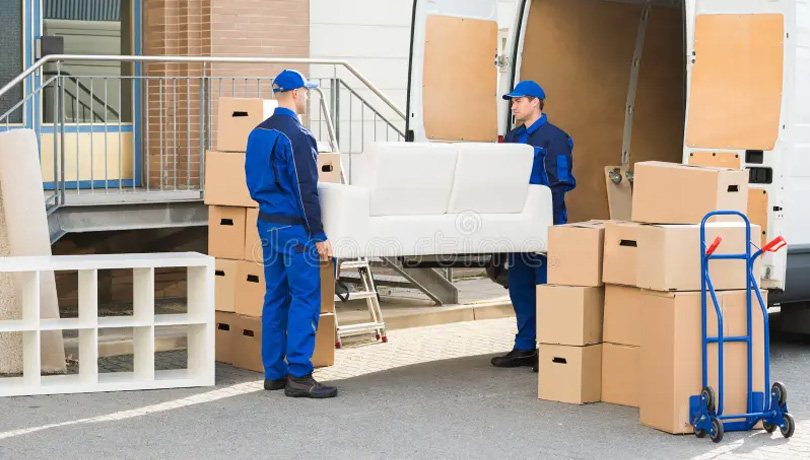Hoarding affects millions of people across the United States, creating an overwhelming environment not only for the individuals struggling but also for families, neighbors, and even entire communities. As items pile up, safety concerns grow, relationships strain, and the person suffering often becomes isolated and overwhelmed. For some, tackling the problem means more than just removing items as it requires a coordinated cleanup effort that is often costly and complex. When it comes to paying for this, Medicare coverage becomes a critical question.
Understanding the Disorder and Its Impact
Hoarding is not just a lifestyle choice or untidiness; it’s a recognized mental health disorder marked by an intense difficulty in discarding items, often paired with an emotional attachment to them. Different forms of hoarding create unique challenges and risks, impacting the health, safety, and quality of life of those involved.
What is Hoarding?
The types of hoarding are varied, with different emotional drivers:
- Sentimental Hoarding: For some, every item has a memory or connection to the past, making it feel almost painful to throw away. Even items that others would find trivial, like old papers or broken trinkets, can carry a significant emotional weight.
- Acquisitional Hoarding: Compulsive shopping, picking up free items, and never saying no to a “good deal” drive this form. It’s less about needing the item and more about needing to acquire it, filling rooms, garages, and sometimes entire homes with objects that are rarely, if ever, used.
- Animal Hoarding: Unlike keeping a few pets, animal hoarding involves taking in more animals than can be cared for. These animals may provide comfort to the hoarder, but in unsafe numbers, they can lead to neglected care, unsanitary conditions, and distress for both the animals and the person.
Each type of hoarding can create an unmanageable environment that impacts both physical and mental health, often leaving individuals feeling trapped by their own belongings.
Health and Safety Risks Associated with Hoarding
Hoarding isn’t just about having too much stuff; it introduces real risks to well-being and safety:
- Physical Dangers: With items piled high, there’s a constant risk of falls, particularly for elderly individuals. Paths can be blocked, making it hard to move freely or access help in an emergency. Over time, physical injuries from slips, trips, and even falling objects become serious concerns.
- Health Complications: Hoarded homes are often breeding grounds for dust, mold, and pests, which can lead to respiratory issues. For those with allergies or asthma, the risks are even higher. In the case of animal hoarding, waste can create unsanitary conditions that lead to infections and respiratory distress.
- Environmental Hazards: Fire risk is common in hoarded homes, with belongings stacked near heat sources or blocking exits. In an emergency, first responders might struggle to navigate through clutter, which can delay help and increase the risk of fatalities.
Daily Life Challenges in a Hoarding Environment
Beyond health risks, hoarding disrupts almost every part of daily life, often leading to isolation and mental health struggles:
- Personal Life Strain: Family and friends may struggle to understand or cope with hoarding behaviors, leading to strained or broken relationships. People with hoarding disorders often feel shame about their homes, which drives them to avoid inviting others over, deepening their isolation.
- Mental Health Impact: Depression, anxiety, and other mental health issues are frequently connected to hoarding. People with hoarding disorder can feel trapped by their belongings, which exacerbates feelings of hopelessness and makes it even harder to let go.
- Community Challenges: When a hoarded home becomes noticeable or a health hazard, neighbors and community members may complain, leading to public scrutiny, possible legal actions, and additional stress for the individual and their family.
Medicare Essentials: What’s Included and What Isn’t
Medicare provides medical coverage primarily for those 65 and older, as well as certain individuals with disabilities. However, when it comes to hoarding cleanup, coverage isn’t straightforward.
Key Medicare Components
Medicare is divided into parts, each covering specific types of services. Knowing what each part offers can clarify if and how it might apply to hoarding cleanup:
Part D: Covers prescription drugs, which may include medications to help manage underlying conditions like anxiety or OCD that can exacerbate hoarding.
Part A: Covers hospital stays, some home health care, and hospice. While it won’t cover hoarding cleanup directly, it might cover certain home health services if they are medically necessary and related to safety.
Part B: Offers outpatient care, mental health support, preventive services, and medical equipment. Under Part B, therapy and counseling for hoarding disorder may be covered, and in some cases, modifications or limited services to make a home safer might be eligible.
Part C (Medicare Advantage): These private plans often include extra benefits beyond standard Medicare, which may cover additional services, including certain in-home modifications or supportive care that could indirectly relate to hoarding.

Eligibility Requirements for Medicare Benefits
Typically, Medicare applies to individuals over 65, but younger people with disabilities or specific medical conditions also qualify. Eligibility for specific services related to hoarding will depend on whether these services can be shown as necessary for health and safety.
Is Hoarding Cleanup Covered by Medicare?
Medicare’s support for hoarding cleanup is conditional. Coverage largely depends on whether the cleanup is deemed medically necessary. Let’s break down what’s possible.
What Medicare May Cover for Hoarding Situations
Medicare does not generally cover hoarding cleanup directly. However, certain services might be included if they address immediate health and safety needs:
- Home Health Services: If the hoarding has created a hazardous environment, Medicare may cover limited cleanup or modifications aimed at making the space safer. For example, removing items to clear walkways for medical equipment or to allow caregiver access may qualify.
- Mental Health Support: Therapy and counseling to address the underlying disorder, such as therapy for obsessive-compulsive disorder (OCD), is covered under Part B. These services are vital in managing hoarding disorder as they target the root causes of the behavior.
- Medically Necessary Cleanup: Cleanup services that are considered essential for safe living and health maintenance may receive partial support. However, this is highly case-specific and typically requires thorough documentation and a physician’s recommendation.
Defining Medical Necessity for Hoarding Cleanup
Medicare only covers services deemed medically necessary, meaning essential for health maintenance. Examples of situations where Medicare might help include:
- Living Safety: If the individual cannot navigate their home or access essential medical equipment because of clutter, cleanup may be necessary for safe living.
- Health Risks: If the home’s condition is worsening an existing condition, like respiratory issues from dust, cleanup may qualify as a preventative health measure.
Home Health Services: When Medicare Steps In
In serious cases where clutter is endangering the individual’s health, Medicare might cover some in-home care or services under its home health benefits. This could include:
- Safety Modifications: Medicare may cover services to clear paths or remove heavy items to reduce injury risks.
- Support for Health Needs: If cleanup is required to set up essential medical equipment or allow caregivers safe access, limited services might be covered.
Who Qualifies for Medicare Support in Hoarding Cleanup?
Specific eligibility criteria apply, and careful documentation is necessary to meet Medicare’s requirements.
Health Conditions That Support Coverage
Medicare may approve hoarding-related support for individuals with mental health diagnoses that impact their daily living:
- Obsessive-Compulsive Disorder (OCD): Many people with hoarding disorder also have OCD, which can strengthen the case for medically necessary cleanup.
- Anxiety and Depression: These conditions often accompany hoarding and contribute to the difficulty in managing possessions. If documented, Medicare may consider support services to prevent the worsening of these conditions.
Necessary Documentation for Medicare Claims
The following documentation can support a claim:
- Medical Records: Diagnosis and history detailing the health risks associated with hoarding.
- Physician’s Recommendation: A letter or statement explaining why cleanup is essential for health and safety.
- Home Safety Evaluation: Documentation of risks present in the home, supporting the need for intervention.
Real-Life Scenarios Demonstrating Eligibility for Hoarding Cleanup Coverage
Understanding Medicare coverage for hoarding cleanup can be clearer through real-life scenarios. Here are a few concise examples:
Case Example 1: Mr. Thompson, Age 72
Background: Mr. Thompson lives alone in a cluttered home filled with newspapers and broken furniture, which poses safety risks.
Health Concerns: He has respiratory issues aggravated by dust and mold.
Medicare Coverage: After a physician’s evaluation highlighting health risks, Medicare-approved limited cleanup services to improve his living conditions.
Case Example 2: Ms. Rodriguez, Age 68
Background: Ms. Rodriguez has OCD, leading to excessive clutter in her home that impacts her daily life.
Health Concerns: Her living conditions worsen her anxiety and depression.
Medicare Coverage: A recommendation from her mental health provider for therapy and cleanup led to Medicare covering both, recognizing the need for a safer environment.
How to Apply for Medicare Coverage for Hoarding Cleanup?
Applying for coverage can feel overwhelming, but these steps can guide you through the process:
- Evaluating the Need: Start by consulting with a healthcare provider to determine if hoarding cleanup meets the medical necessity criteria.
- Gathering Essential Documentation: Collect all paperwork, including medical records, a doctor’s statement, and any home safety assessments.
- Submitting a Medicare Claim: File the claim, ensuring all documentation clearly demonstrates the health and safety risks.
- What to Do If Your Claim is Denied: If denied, Medicare has an appeal process. Adding more documentation or getting an additional physician’s statement can help.
Need Hoarding Cleanup? We’re Just a Call Away
& Ready to Respond Quickly!

Choosing the Right Cleanup Service Provider
Finding Approved Providers
To locate suitable providers:
Research Online: Look for companies specializing in hoarding cleanup and verify their Medicare approval.ent and room layouts. This advanced preparation helps create an efficient, comfortable living space that works for your lifestyle from day one.
Consult Healthcare Providers: Ask your doctor for recommendations.

Evaluating Service Quality
Choose a reputable cleanup company by:
- Checking Credentials: Ensure they are licensed and insured.
- Reading Reviews: Look for testimonials from previous clients to gauge reliability.
Coordination with Healthcare Providers
To ensure effective cleanup:
- Communicate Openly: Ensure the cleanup service collaborates with your healthcare team for a comprehensive approach.
Legal and Ethical Considerations
Consent and Autonomy
Respecting individual rights is vital:
- Informed Consent: Individuals must understand and agree to the cleanup process.
- Autonomy: Their choices should be honored, even in challenging situations.
Guardianship and Involuntary Cleanup
When consent isn’t possible:
- Legal Processes: Guardianship may be required if individuals cannot make decisions.
- Involuntary Cleanup: Authorities may intervene for safety reasons in extreme cases.
Privacy Concerns
Safeguarding personal information is essential:
- Confidentiality: Cleanup services should protect personal and medical information during the process.
Psychological Support and Rehabilitation
Addressing Mental Health
Mental health care is crucial in managing hoarding:
- Therapy: Cognitive-behavioral therapy can help change harmful thought patterns related to possessions.
Support Groups and Resources
Connecting with others offers valuable support:
- Community Support: Join local or online support groups for shared experiences and resources.
Long-Term Management
Preventing relapse involves ongoing strategies:
- Develop Plans: Create personalized strategies for maintaining a clutter-free environment.
Preventative Measures and Tips
Early Intervention Strategies
Acting early can help prevent severe hoarding:
- Recognizing Signs: Look for signs of difficulty in discarding items or excessive collecting.
- Open Dialogue: Encourage discussions about concerns to foster understanding.
Organizational Tips
Maintain order with practical advice:
- Regular Decluttering: Schedule regular sessions to prevent buildup.
- Set Limits: Establish boundaries for keeping items in specific spaces.
Community Resources
Utilize local programs for support:
- Assistance Programs: Explore local resources aimed at helping with hoarding issues and cleanup.
Recent Updates and Policy Changes
Medicare Policy Updates in 2024
Stay informed about changes:
- Service Expansions: Check for any new services covered under Medicare related to mental health and cleanup.
Future Outlook
Be prepared for upcoming legislative changes:
- Advocacy Efforts: Engage with advocacy groups for updates on beneficial legislation regarding hoarding cleanup.
Frequently Asked Questions (FAQs)
Does Medicare cover hoarding cleanup?
Yes, if it’s deemed medically necessary with proper documentation.
What if my claim is denied?
You can appeal by providing additional evidence of medical necessity.
How do I find a provider?
Consult your healthcare provider or search for Medicare-approved services online.
What if I need ongoing support?
Look into local support groups and resources for continued assistance.
Wrap Up
While Medicare’s options for direct hoarding cleanup support are limited, the right documentation and eligibility assessment can open doors to services that foster safer living environments. Don’t let the paperwork or policy nuances keep you from securing the support needed to move forward. Each transition becomes not just a challenge but an opportunity for growth and healing, bringing a safer, more balanced life into reach.
At LifeCycle Transitions, we understand that facing life changes, especially those involving hoarding cleanup can feel daunting. Contact us today, and let us help you move forward with confidence, dignity, and renewed hope.
